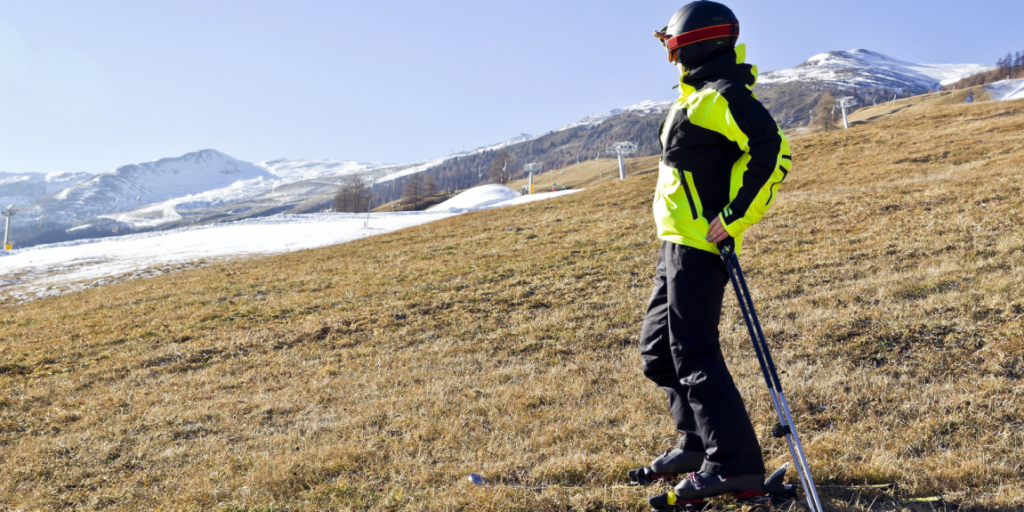As global temperatures rise and ski resorts face shrinking snow seasons, artificial dry slopes are emerging as a potential lifeline for the sport.
Others are reading now
In Copenhagen, a new kind of ski experience is changing how people think about the sport.
As BBC reports, visitors soaking in outdoor spas can gaze across the Øresund Strait at CopenHill — a waste-to-energy plant crowned with hiking trails, a rock-climbing wall, and a 400-meter-long artificial ski slope.
Designed by Danish architect Bjarke Ingels, the structure’s synthetic surface, known as Neveplast, mimics hard-packed snow using a grid of conical stems. Since its 2019 debut, CopenHill has drawn thousands of locals and visitors eager to test their skis on its synthetic slope.
Among them is freestyle skier Ellen Dansgaard, who says, “The best part is you can ski all year and practice your skills,” cited by BBC.
Adapting to a new reality
The concept of year-round skiing is gaining traction as snow seasons shorten worldwide. According to the US Environmental Protection Agency, snowpack seasons have decreased by more than 15 days since 1955.
Also read
A recent study by Taylor and francis online cited by BBC predicts that by 2050, demand for artificial snow could increase by up to 97 percent as traditional ski resorts struggle to adapt.
In Quebec, Canada, the Tremblant ski resort recently invested $1.4 million in its own dry slope to keep visitors coming during the warmer months, reports BBC.
From novelty to necessity
Dry slope skiing isn’t a new idea. As ski writer Patrick Thorne explained to BBC, the first artificial ski mat was invented in the 1950s by Jacques Brunel, a Canadian-born ski jumper who wanted to “make snow in August.”
Thorne noted that dry slopes peaked in popularity during the 1970s, especially in the UK, before declining in the 1990s.
Now, the trend is rebounding. “In China, hundreds have been built in the middle of cities,” he said. Today, there are more than 1,000 dry slopes operating in 50 countries.
A climate-conscious comeback
Also read
Ski expert Rob Stewart told BBC that artificial slopes could help “future-proof” resorts, especially those at lower altitudes. “If the dry slope’s there and it snows on top, you’re never going to know it’s there,” he explained. “But if the snow doesn’t arrive, you’ve got a surface you can still ski on.”
Tremblant’s marketing director, Jean-François Gour, said the new facility will begin as a summer attraction before the resort considers steeper expansions.
Saving slopes and communities
According to BBC Travel’s Set Out series, community-run dry slopes are also being revived. In Polmont, Scotland, locals recently saved their 50-year-old ski hill from closure by taking over ownership.
Ski instructor Bailey Ross said the slope “means a lot to me and the community — it’s a massive part of their lives.”
Ross added that learning on a dry slope can improve technique. “It’s harder, but once you feel comfortable, it’s amazing,” he said. “Warm days are slower and stickier; cold, wet days make the mat fast.”
Growing global appeal
Also read
The United States has only one dry slope — the Liberty Mountain Snowflex Centre in Lynchburg, Virginia. Its director, Derek Woods, told BBC that the centre, now in its 15th year, is seeing more families and beginners as nearby resorts struggle to produce snow.
In the UK, London-based ski business owner Idalette de Bruin said her customers are turning to dry slopes to stay active and save money. “If you want to get your ski legs before a big vacation,” she explained, “a couple of hours each weekend means you’ll hit the slopes with more confidence.”
A glimpse of the future
The popularity of dry slope skiing is rising as more skiers seek sustainable alternatives. According to BBC, the movement offers not just an answer to climate challenges but a reimagining of how skiing fits into everyday life — from city rooftops to repurposed industrial spaces.
And as Denmark’s CopenHill continues to draw thousands of visitors year-round, it may well stand as a symbol of skiing’s resilient new chapter.
Sources: BBC, US Environmental Protection Agency, DrySlopeNews.com, interviews via BBC Travel.
Also read
This article is made and published by August M, who may have used AI in the preparation


